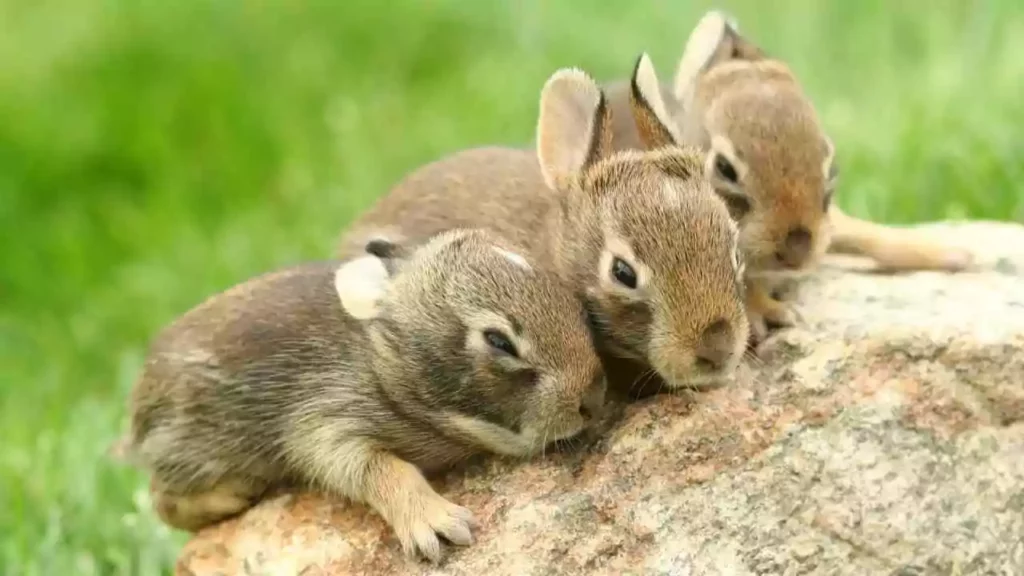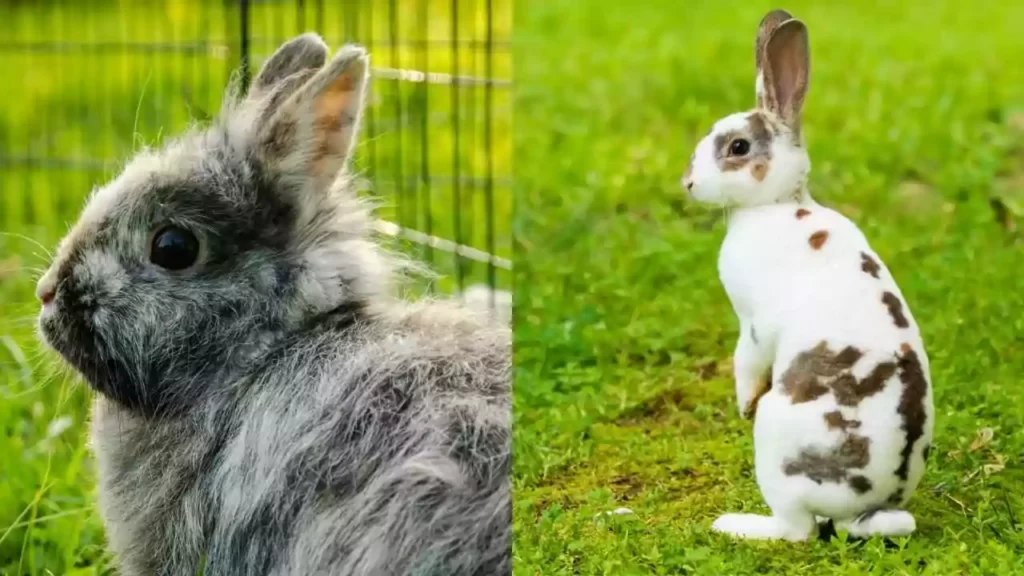If you continuously ask yourself, Can you keep rabbits in apartments? Do the apartment owners mind if I keep it?
In that case, if they agree, how would I care for it properly in a small apartment?
When it comes to keeping a pet, like a rabbit, in an apartment, you should think a hundred times before making any decision.
To get answers to your all related questions, it is the right place to get all related information.
So let’s start!
Can You Keep Rabbits In Apartments?
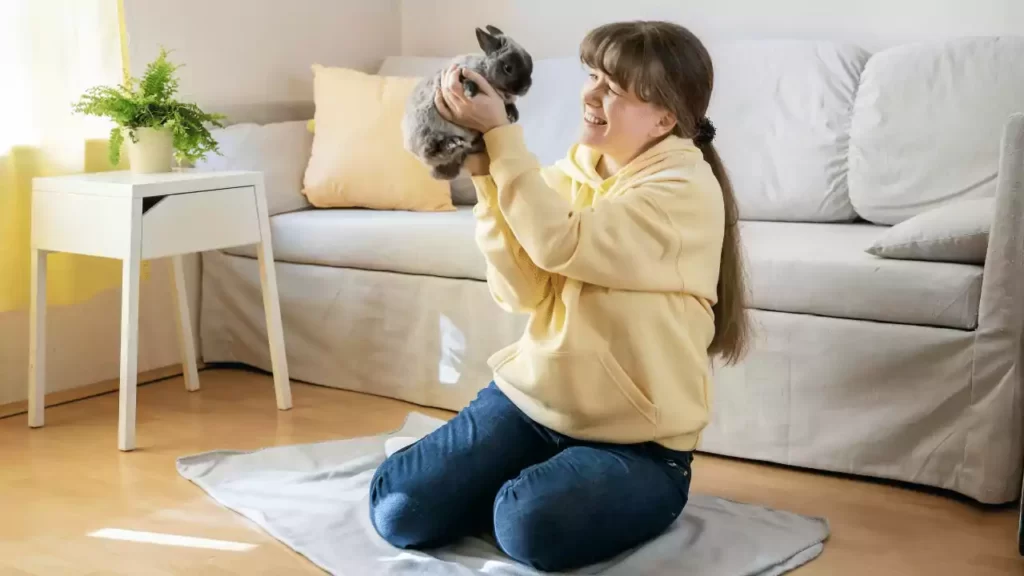
Apartments are usually compact and have limited space. On the other hand, rabbits are very lively. They need safe and well-ventilated space to walk, run, jump, and hop around.
If you have adequate space for the comfortable living of rabbits and they will have the liberty to walk and exercise – you can keep rabbits in an apartment. It will keep them healthy and active.
Do Most Apartments Allow Rabbits?
Some apartments have no problem with rabbits and don’t even demand a huge pet fee.
But, as a renter, you might find some flats or apartment owners that will not allow your furry friend to live with you. Especially, they will not agree if they have any terrible experience of getting irritated by poorly behaved pets that cause damage to their property and create chaos in the apartment.
Secondly, most of the apartments generally have narrow spaces. So if they allow you to keep pets with you, the situation will get worse, ending up with a messier apartment.
That’s why most of the landlords may not allow living with pets in their apartments.
However, considerable exploration and knowledge about the rules and regulations of apartments can help you to find kind enough apartment owners, who have no problem with pets in the apartment.
How To Care For a Rabbit In An Apartment? 9 Tips
Let’s explore the easiest ways to convert even a tiny apartment into a secure and favorable environment for your furry friend.
Make sure to follow the given tips to ensure the good health of your cute companion.
1. Give Rabbit the Diet Full Of Nutrients
- Rabbits, being herbivores, consume plants. A diet full of numerous grass leaves is their favorite one. The essential component of their diet is grass hay like a meadow, oat, rye, etc. The young rabbits also love to have alfalfa hay.
- It boosts the rabbit’s gastrointestinal tract and oral health due to higher amounts of vitamins and minerals. So, prepare a meal for the rabbit with grass hay.
2. Choose The Room For Your Bunny Carefully
- The rabbits love to interact with other animals. So, you have to carefully choose the location of your bunny’s housing area within your home.
- The place should ensure the rabbit has proper space to relax by himself, but it should not be far away from your living room.
3. The Most-needed Bunny-proofing
- As discussed above, rabbits are excellent burrowers. That’s why you need to hide wires or any electricity source from your bunny.
- Keep any poisonous houseplants out of reach of your beloved pet. Place the vacuum cleaners, house-cleaning sprays, any medicines out of the access of the rabbit.
- Go and get different buster-friendly toys that they are allowed to chew. Otherwise, you will end up having chewed furniture, carpets, and door frames.
4. Protect The Rabbit From Predators
- The location of the rabbit’s area is such that it should be out of the reach of hungry predators.
- They should always have some non-toxic hiding places to hide if they are anxious, depressed, or want to be in solitude.
5. Think Twice About Climate
- It’s a reminder for you that not all apartments provide you with even temperatures the whole year. Rabbits are sensitive, but they can deal with cold weather more effectively than hot.
- So, the room that always remains a little colder is a great option for rabbits to live in. Also, make sure to keep him away from the room that gets crazy hot often.
6. Spay or Neuter The Rabbit
- If your rabbit starts behaving strangely and shows aggression sometimes, it’s the best time to spay your rabbit.
- The rabbits who are 3-6 months old can be passed through this procedure.
- So, plan a visit to the right vet to get your bunny neutered. After getting it fixed, it will avoid spreading urine and his poops anywhere in the house.
7. Let Him Exercise When He Wants
- Rabbits are very active and energetic animals when it comes to exercise. They need proper time to move around to maintain their shapes.
- So, let it roam, play, run, exercise out of its enclosure for not less than 3 hours a day. Please keep your eyes on him unless he finishes his activities.
8. Get a Litter Box For The Rabbit
- Remember, rabbits can poop and pee anywhere they want to claim their territory.
- Consider putting an average-sized litter box near their feeding area. You can place a slim layer of rabbit-friendly, recycled paper pellet litter at the base of the litter box.
9. Keep The Rabbit In a Quiet Apartment
- Lastly, your apartment life should be as tranquil and peaceful as it can be.
- Obviously, you’re living in an apartment that allows pets, so there will be a lot of noise, and the dog barks from neighboring apartments. That cannot be much comforting for your sensitive bunny.
- So, make sure to avoid such noises and continue training rabbits to adjust to such an environment. Otherwise, results can be worse if the rabbit gets furious.
Top 13 Best Rabbit Breeds for Apartments
You can maintain several rabbit breeds as a companion in an apartment as long as you follow the laws and restrictions.
You can find it challenging to select the right rabbit breed for your home. There are several breeds to choose from, each with its own set of lifestyle demands. Therefore, don’t worry; the ideal rabbit breed for you is still out there.
I’ll recommend the best rabbit breeds for your apartment and describe some of their qualities in the list below.
1. Mini Rex: 30sq Inches Apt.Cage
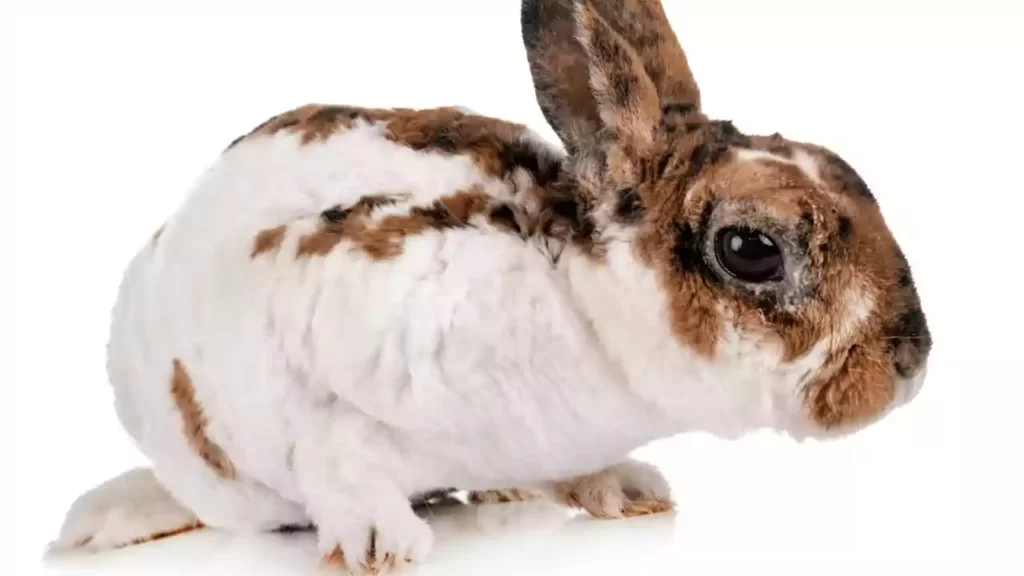
Mini Rex first appeared in the late 1800s in France. Rabbit breeds of this type are adorable and have the softest rabbit hair you will ever feel. They are also available in a wide range of attractive colors and designs.
| Lifespan: | 5 – 7 years |
| Temperament: | peaceful, active, lively, and loving. |
| Appearance: | The best commercial body type, wedge-shaped head, tiny ears, and smooth and velvety fur. |
| Weight range: | 3 to 4.5 pounds for both females and males. |
| Personality: | Normally peaceful and quiet, although may wiggle. |
| Size: | Small |
| Colors: | Black, blue, chocolate, sable, lilac, and red, etc. |
| Price: | $250 |
| Gestation period: | 31-33 days |
| Temperature: | Not be too warm, less than 80 ℉. |
Pros
- It has a pretty good life span of around ten years. It makes it an excellent choice for families with children.
- It is peaceful, curious, and amicable.
- They require little care on the part of the owner.
Cons
- Too much brushing can harm the texture of the mini rex‘s coat.
- During the shedding season, this breed will require more maintenance.
2. Holland Lop: 2sq to 4sq feet Apt. Cage
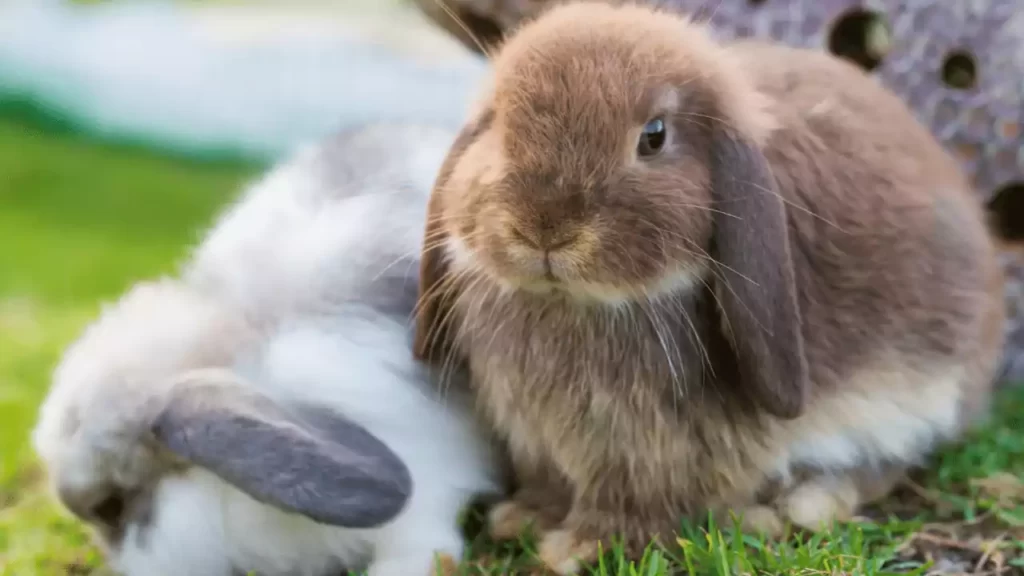
It’s no secret that the Holland Lop is among the loveliest rabbit breeds out there. They are excellent pets since they are lively, energetic, and can be small packages of joy. They Originated from the Netherlands.
| Lifespan: | 7–14 years |
| Temperament: | Nice, gentle, and quiet rabbits. |
| Appearance: | Tiny semi-arched body and silky, easy-to-manage fur, and short lop ears. |
| Weight: | 4 lbs. |
| Personality: | Active, lively, and friendly, but will fight being lifted and held. |
| Size: | Small |
| Colors: | Have solid pigmentation or white spots—Black, Blue, lilac, Chocolate, Cream, Red, etc. |
| Price: | $40 |
| Temperature: | 60-65 ° F. |
Pros
- Their personality is cheerful and lively.
- They are highly active partners who just require minimal grooming.
Cons
- They shed a lot in the summer.
- Bathing rabbits is not necessary, as it is unpleasant and might kill them.
3. Sattin: 2sq to 3sq feet Apt. Cage
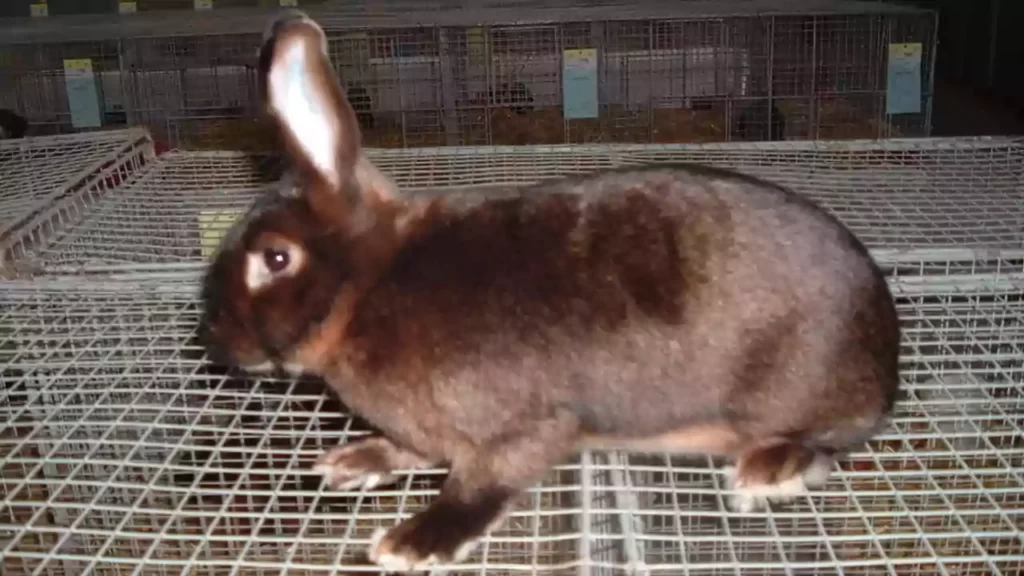
Satin rabbits range in size from modest to large. Despite its small size, it is a famous breed in the United States of America. They quickly gained popularity in 1956.
| Lifespan: | 5–8 years |
| Temperament: | Peaceful, polite, obedient, and generally well-mannered. |
| Appearance: | An extremely glossy coat, petite body, and well-rounded, full head. |
| Weight range: | 8- 11 lbs. |
| Personality: | Peaceful and kind, yet afraid of strange humans. |
| Size: | Medium-sized to large |
| Colors: | Black, Broken, Blue, Chocolate, Copper, Otter, Red, White, and Siamese |
| Price: | Between $50 and $150 |
| Gestation period: | 31 days |
| Temperature: | Below 50 ° F or over 85 ° F |
Pros
- Mini Satins are well-known for their calm and sensitive nature.
- They are outgoing, friendly, and active.
Cons
- They are typically healthy rabbits; however, they can suffer GI stasis, malocclusion, mites, and cancer.
4. Dwarf Hotot: 4sq to 6sq Feet Apt. Cage
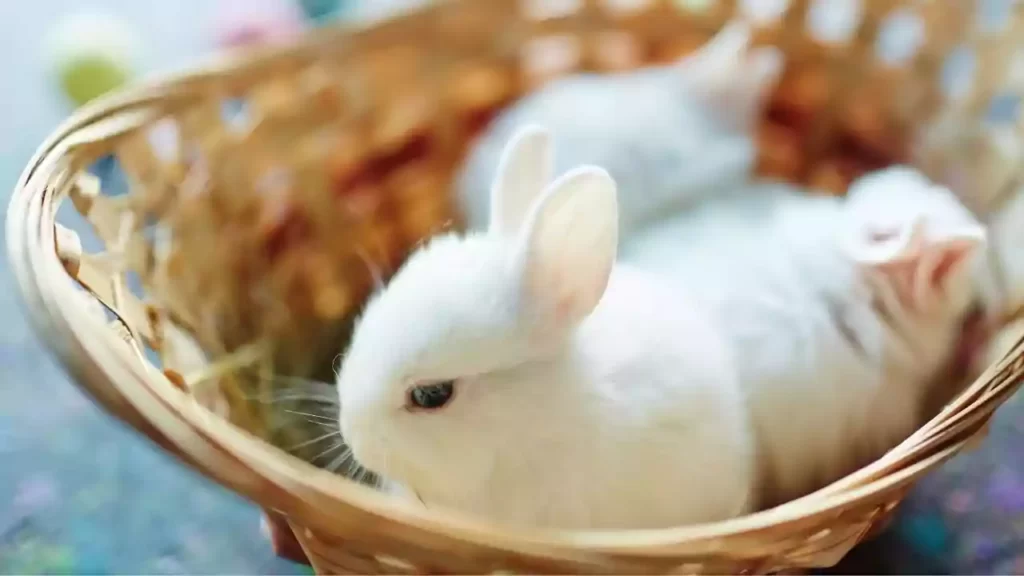
Dwarf Hotots are well-known for their remarkable coloration. They make excellent indoor pets, friends, and show rabbits. The Dwarf Hotot originated in Germany, whereas the original Hotot breed originated in France.
| Lifespan: | 7 to 10 years |
| Temperament: | Typically outgoing and cheerful. However, they may be grumpy. |
| Appearance: | Very tiny breed with short, erect ears and entirely white coat, with black patches around the eyes. |
| Weight range: | 2.5-3 lbs. |
| Personality: | Friendly and very responsive. |
| Size: | Small or Dwarf |
| Colors: | White with black-bands eyes and white with chocolate-banded eye-bands. |
| Price: | $25- $75 |
| Temperature: | 50 to 70 ℉ |
| Gestation period: | 31 days |
Pros
- Dwarf Hotot is ideal for individuals, the elderly, and families with older kids.
- They perform wonderfully in flats and other small places.
- They like playing with their owners.
Cons
- Dwarf Hotot is prone to malocclusion.
- Make sure they don’t overdose when you feed them.
- You must keep track of their food intake.
5. Dutch rabbit: 2 to 4 sq Feet Apt. Cage
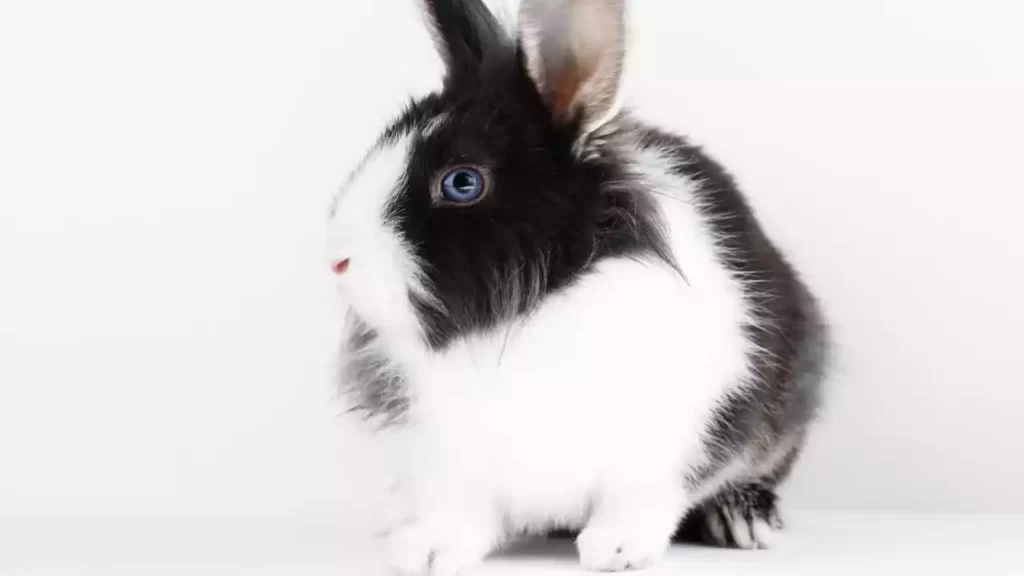
In the world’s top 10 most famous rabbit breeds, the cute tiny Dutch rabbit is one of the most prominent. They are attractive due to their great gentle, friendly temperament and moderate size. They were initially bred in England.
| Lifespan: | 5–8 years |
| Temperament: | Peaceful, obedient, polite, friendly, and playful. |
| Appearance: | Black ears and bottoms, as well as white shoulders, tummy, and front legs. |
| Weight range: | 3.5 to 5.5 lbs. |
| Personality: | Peaceful and kind, yet easily sad if caged up for too long. |
| Size: | Small |
| Colors: | Black, blue, chinchilla, grey, steel, and tortoise. |
| Price: | $30 to $90 |
| Temperature: | 40–70 ° F |
| Gestation period: | 31 days |
Pros
- A Dutch rabbit is an excellent option for all types of individuals.
- The coat is simple to care for.
Cons
- In the summer, their fur sheds a lot.
- They must be able to run regularly.
6. Netherland dwarf: 4sq to 6sq feet Apt. Cage
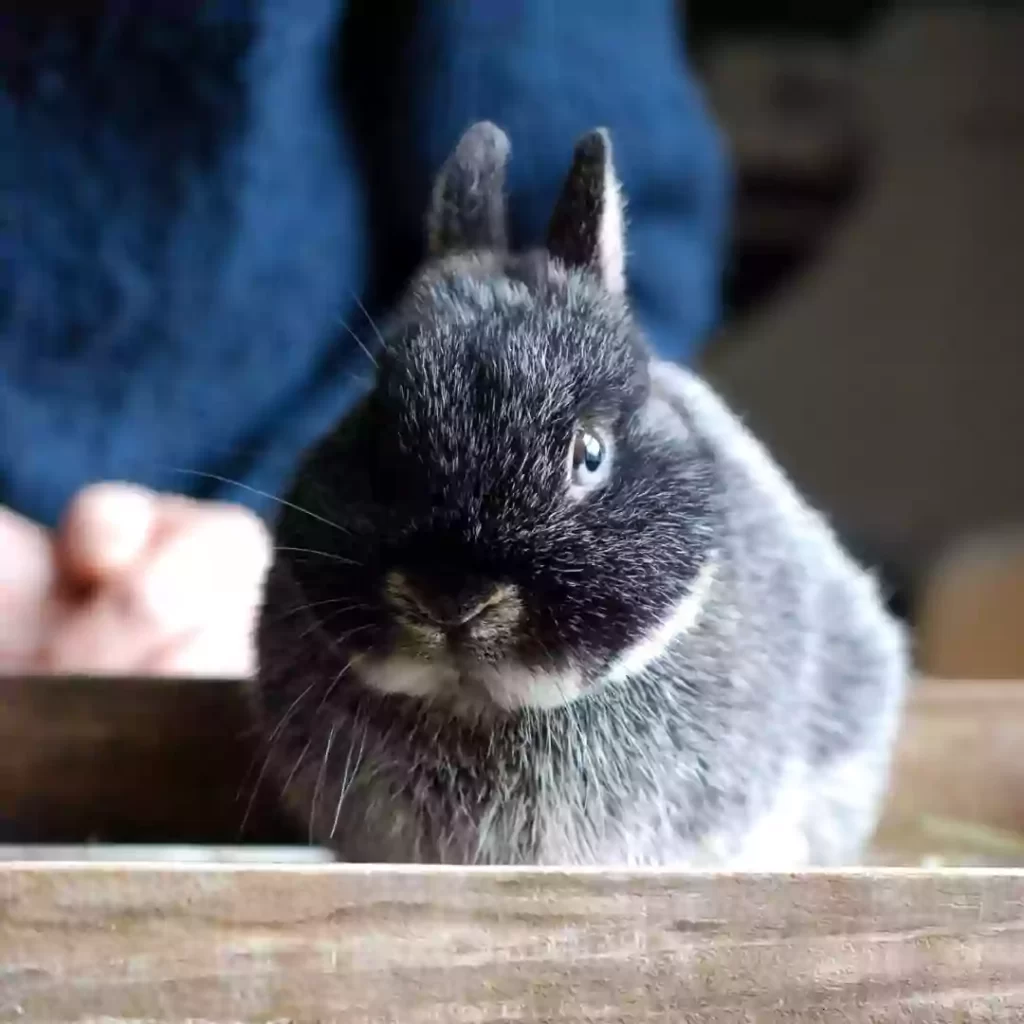
The Netherland Dwarf rabbit breed is a beautiful small bunny with a happy, lively personality. They are not hard to care for and make great home or apartment pets. They got their start in the Netherlands.
| Lifespan: | 10 to 12 years |
| Temperament: | Cautious, timid, and maybe moody, yet they are also loving. |
| Appearance: | Relatively tiny, having short, little ears. |
| Weight range: | 1.1-2.5 lbs. |
| Personality: | Nervous and timid, yet lovely in general. |
| Size: | Small |
| Colors: | Black, Blue, Blue-eyed White, Chocolate, Lilac, Siamese Sable, Tortoiseshell, blue, Siamese smoke, ruby-eyed white, chocolate point, etc. |
| Price: | $25 to $75 |
| Temperature: | 50-70 F |
| Gestation period: | 28-32 days |
Pros
- It is an excellent company for an adult who is helpless or has a handicap.
- This little indoor rabbit is suitable as a pet or as a show rabbit.
- They don’t demand a level of care regularly.
Cons
- When they are young, these rabbits are prone to malocclusion.
- It’s essential to offer them fibrous foods like grasses and hay.
- They are shy in crowded situations due to their personality.
7. Polish Rabbit: 3sq to 4sq feet Apt.Cage
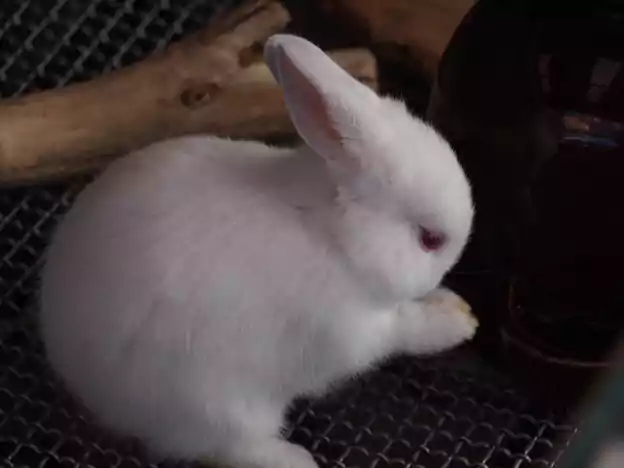
The Polish rabbit is a charming little breed; however, they can be naughty and anxious due to their small stature. Because Polish rabbits are so entertaining to see, they have been there since the 1900s.
| Lifespan: | 5 to 6 years |
| Temperament: | Peaceful, gentle, and pleasant rabbit. |
| Appearance: | Short, silky, tiny and have small ears, small head, full cheeks, and sharp eyes. |
| Weight range: | 2 ½ – 3 1/2 lbs. |
| Personality: | Cuddly, peaceful, and loving nature. |
| Size: | Small |
| Colors: | Black, Broken Pattern, blue, Chocolate, agouti and, Red-eyed White. |
| Price: | $50 |
| Temperature: | 60–65 degrees Fahrenheit. |
| Gestation period: | 31 to 33 days |
Pros
- The Polish rabbit is famous for being friendly and kind.
- Make excellent companions for both families and individuals.
Cons
- They should get their teeth examined for common health issues such as overgrowth, feather plucking, and ear mites.
8. Lionhead: 2sq to 4sq feet Apt.Cage
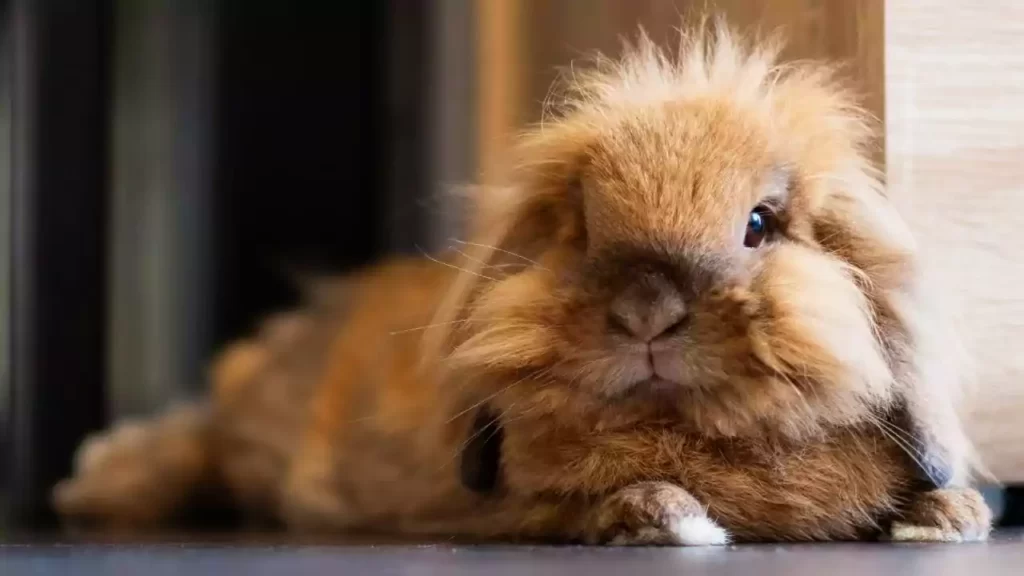
The Lionhead breed originated in Belgium, where breeders crossed a Swiss Fox with a Netherland Dwarf. They are genuinely wonderful small pets with a lot of intellect; they are energetic, lively, and enjoy getting care of.
| Lifespan: | 7 to 10 years |
| Temperament: | Gentle, clever, energetic, and enjoy being the center of attention. They may be highly anxious and quickly frightened. |
| Appearance: | Unique flyaway coat with long fur over their head and back. |
| Weight range: | 2.5 to 3.7 lbs. |
| Personality: | Excited, loving, and enjoys playing. |
| Size: | Small |
| Colors: | Black, chocolate, ruby-eyed white, blue, and lilac. |
| Price: | $30 – $100 |
| Temperature: | 70 ° F |
| Gestation period: | 30 – 35 days |
Pros
- Lionhead enjoys being lifted and held, and its look will delight your children.
- They’re also incredibly loving, and after they’ve gotten to know you, they’ll accompany you around the home like a dog.
Cons
- It requires more upkeep than some other rabbit breeds.
- The long hair must be maintained regularly since the fur may quickly become tangled in things.
9. Jersey Wooly: 3sq feet Apt. Cage
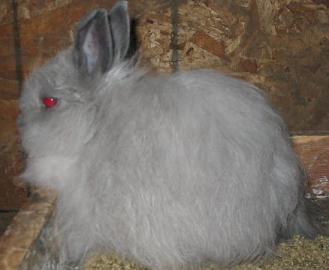
The Jersey Wooly is a tiny dwarf rabbit breed. It is the outcome of a mating between the French Angora and the Netherland Dwarf. They are excellent pets since they are small and caring, even if they need more maintenance.
| Lifespan: | 7 to10 years |
| Temperament: | Energetic, calm, kind, and friendly. |
| Appearance: | Little, short ears and relatively small body, square and bold head, fluffy and thick fur. |
| Weight range: | 2.5 to 3.5 lbs. |
| Personality: | Kind and caring. |
| Size: | Small |
| Colors: | Agouti, Self, Shaded, and Tan Pattern. |
| Price: | $40 |
| Temperature: | moderate |
| Gestation period: | 31-33 days |
Pros
- Jersey wooly is ideal for living in an apartment.
- It’s also an excellent choice for first-time rabbit owners.
- They are famous for their obedience, and they flourish when they receive a lot of care from their family.
Cons
- They demand a little more care than a short-haired breed.
- Have very delicate skin, so be cautious with the brush you choose.
10. Californian Rabbit: 2sq to 3sq feet Apt.Cage
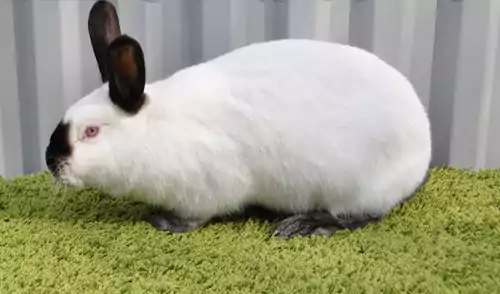
The Californian rabbit is a lovely giant white bunny. It is polite and can get along with children. In 1923, George S. West of Lynwood produced a Californian rabbit.
| Lifespan: | 5 to 10 years |
| Temperament: | Fairly energetic, pleasant, gentle, peaceful, and mild. |
| Appearance: | Strong and broad shoulders and thick and rough coat. |
| Weight range: | 4.9 to 5.45 kgs |
| Personality: | Calm, a little bashful, and enjoy cuddling. |
| Size: | Large |
| Colors: | White with black points, chocolate, lilac, white with black points, blue. |
| Price: | $10 to $100 |
| Temperature: | 60 to 65 ° F |
| Gestation period: | 29 days |
Pros
- The Californian rabbit is amiable, active, and enjoys being outside.
- They have no known health problems.
Cons
- In spring, they shed too much and require extra grooming at least two times a day.
11. Harlequin Rabbit: 3sq to 4sq feet Apt. Cage
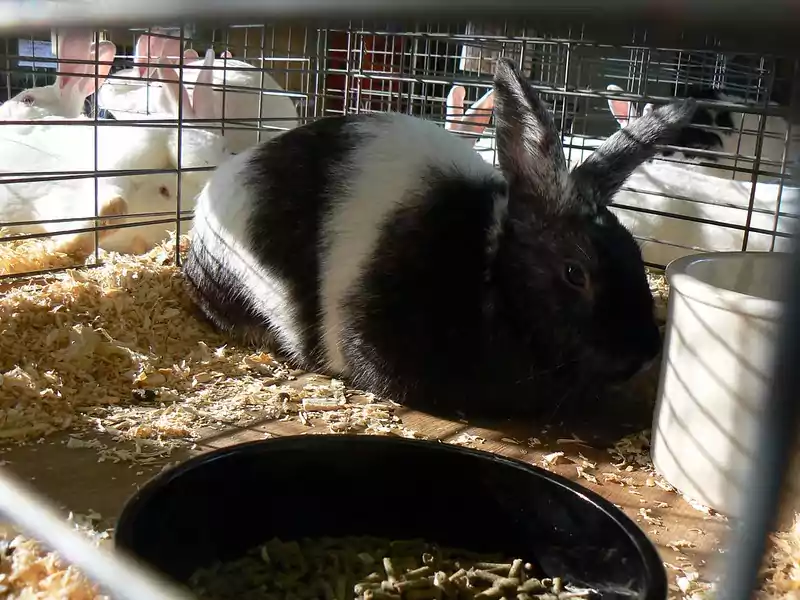
Harlequins are known as Japanese Rabbits. In the 1880s, they originated in France. They are excellent show rabbits for anyone looking for a rabbit with attractive colors and characteristics.
| Lifespan: | 5–8 years |
| Temperament: | Energetic, cheerful, lovable, intelligent, and full of life. |
| Appearance: | Medium-sized breed with broadheads and unique coats. Bands, bars, or a combo of the two are the most common body marks. |
| Weight range: | 6.5 to 9.5 lbs. |
| Personality: | An active and intelligent breed. |
| Size: | Large |
| Colors: | Black, orange, lilac, blue, brown, black, chocolate, and magpie. |
| Price: | $20 to $100 |
| Temperature: | 65 ℉ |
| Gestation period: | 31 to 33 days |
Pros
- Harlequins are bright bunnies who like playing with their human partners.
- Energetic; therefore, they require significant space to move about.
- They do not suffer from any unique health concerns.
Cons
- The cabinet should be large enough to allow it to exercise often.
12. Havana: 2sq to 3sq feet Apt. Cage
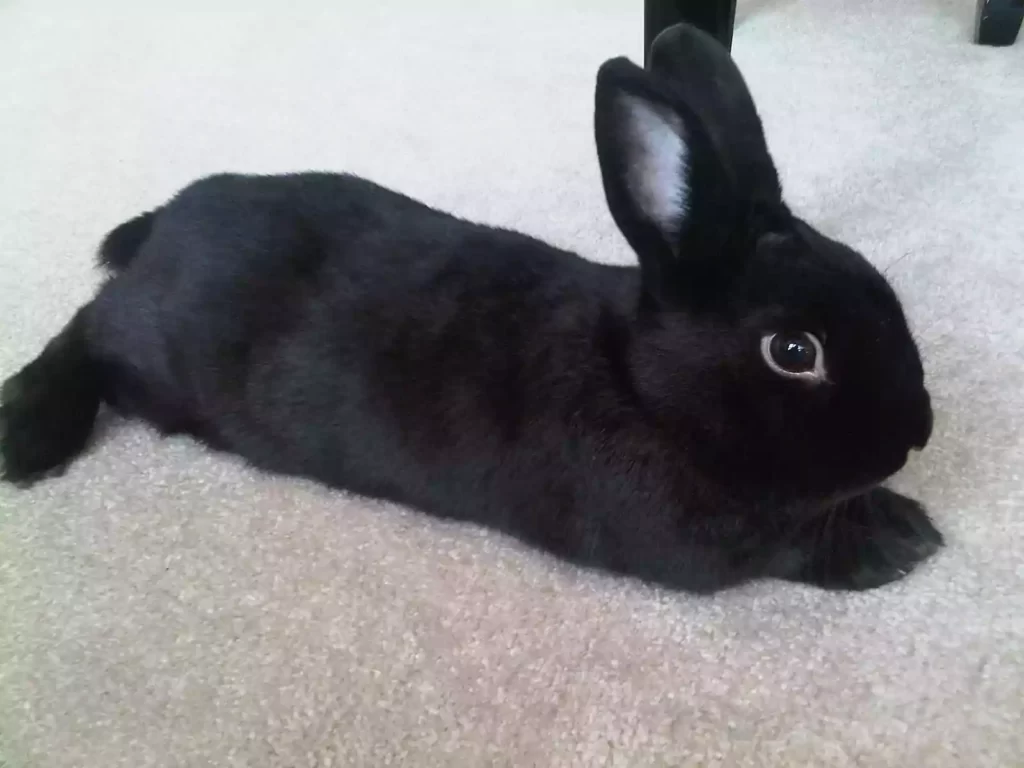
The Havana rabbit breed is a beautiful rabbit in five color varieties. Havanas originated in Holland. With their charming personalities, they also make excellent pets.
| Lifespan: | 5–8 years |
| Temperament: | Lively, peaceful, kind, and loving. |
| Appearance: | Small and rounded bodies with tiny, straight legs. |
| Weight range: | 4.5-6.5 lbs. |
| Personality: | Calm and kind, low energy level, and a strong bond with people. |
| Size: | Medium |
| Colors: | Black, blue, broken, and chocolate. |
| Price: | $20-$100 |
| Temperature: | 60-70 degrees Fahrenheit. |
| Gestation period: | 28 days |
Pros
- Havana rabbit is ideal for kids, first-time pet owners, and older people.
- They are the best indoor pet for your apartment.
- Don’t need much brushing, but they do love grooming time with their owners.
Cons
- Not very active, so they require a little more care.
13. Himalayan Rabbit: 2sq to 4sq feet Apt. Cage
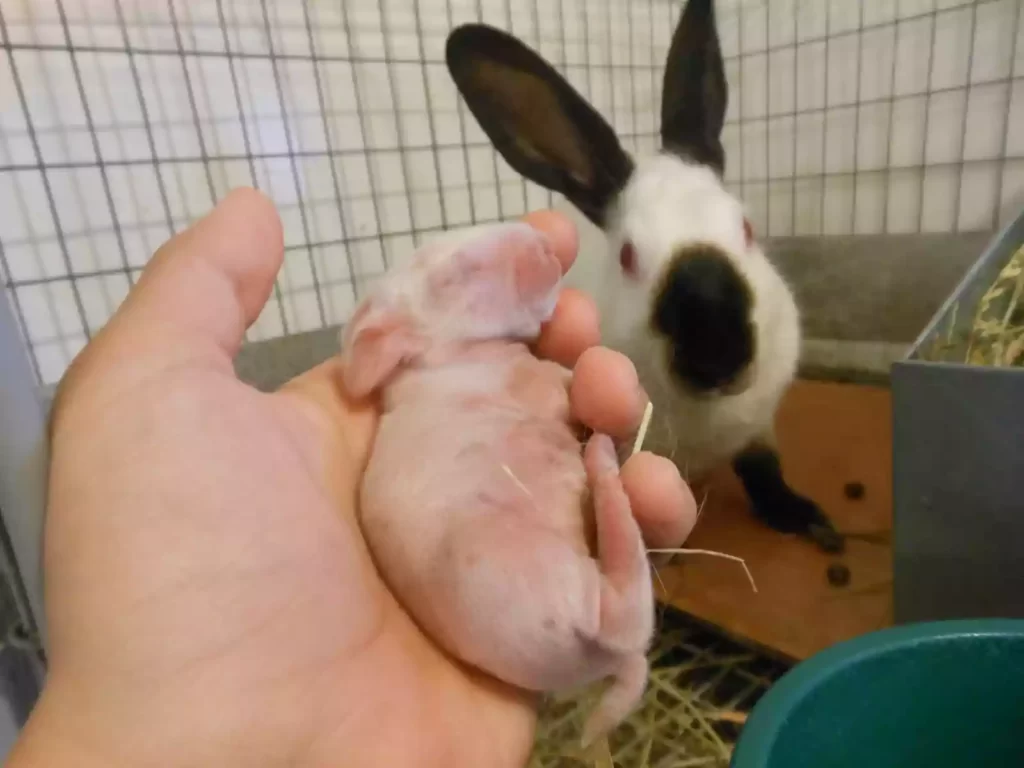
Himalayan rabbits initially appeared in the United States in the early 1900s. They are also excellent pets for families, individuals, and the elderly. They are also effortless to care for, making them a perfect choice for new rabbit owners.
| Lifespan: | 5-8 years |
| Temperament: | Polite and kind rabbits with a peaceful attitude. |
| Appearance: | Short, white hair with dark patterns on the paws, tail, and ears, as well as an oval mark on the nose. |
| Weight range: | 2.5 to 5 lbs. |
| Personality: | Peaceful and tolerant. |
| Size: | Small to medium |
| Colors: | Black, blue, chocolate, and lilac. |
| Price: | $25-$60 |
| Temperature: | tolerate the cold temperature. |
| Gestation period: | 31 days |
Pros
- Himalayan rabbit is an excellent option for families with children.
- It is content either indoors or outside.
- No known health issues harm this breed; therefore, it is simple to care for.
Cons
- As newborns, they are susceptible to cold.
Apartment Rabbit Cage Requirements
Sharing your house with rabbits may be a lovely experience, but it is not to be underestimated.
Rabbits require a place to eat, rest, hide, go to the bathroom, and have space to jump, race, play, leap, and burrow.
You can keep them in cages in the house, with certain independence to go around after proper rabbit-proofing.
Because rabbits respond effectively to litter training, many owners will allow their rabbits to roam free in the home for most of the day.
Design
To keep cleaning easy, many rabbit enclosures have wire flooring over pull-out pans.
Wire flooring, on the other hand, might be unpleasant for your rabbit to move on. As a result, it is preferable to choose a cage without wire flooring.
If your pen has wire floors, cover the wire with a piece of wood or grass. There should be smooth corners on the opening.
Bedding or Litter
To offer grip, grass or sisal mats are an excellent option for solid-floored pens. Fleece blankets are also available. As long as your rabbit doesn’t tear and destroy them, you can use rugs or towels as mats.
Straw or hay is an excellent bedding option for bunnies.
Size of the Cage
The bigger, the better! A rabbit’s cage should be at least 4-6 times the size of your rabbit when he’s wholly spread out–even more if he spends a considerable part of the day.
It’s also important to consider the rabbit’s exercise time and room while deciding on cage size.
For 1-2 rabbits, one general rule is at least 8 sq ft of cage area and at least 24 sq ft of exercising space, in which the rabbit can roam and play for approximately 5 hours each day.
You may make or purchase a two-story “home” for your rabbit, with the levels linked by a ramp–they will adore it!
Where To Fix The Rabbit Cage In Your Apartment?
Rabbits are active and require social connections with their families. Keeping their cage in a large area of your house, such as the kitchen or lounge room, will let them engage with you and truly become a part of your family.
Do Rabbits Like Sunlight?
Yes, they do. Sunlight is essential for the health of rabbits. It aids them in producing vitamin D. Pet rabbits rely on their caretakers to establish a secure and pleasant environment. So think about where you’ll put your rabbit cage.
FAQs
Here are some frequently asked questions.
Will my bunny jump off the balcony?
When rabbits are on a balcony, they usually take extra precautions. A rabbit may likely attempt to leap onto a balcony edge. Accidents are all too likely to occur from here. It’s recommended to keep rabbits away from balconies for their safety.
Is it OK to keep a rabbit on my balcony?
Yes, the balcony is a great spot to set up a mini-habitat for your rabbits. If you don’t have your garden or lack space, a patio is a suitable choice. It’s especially true for city folk who cannot raise rabbits indoors.
Best rabbit breed for emotional support?
Rabbits are suitable to serve as emotional support animals for persons with emotional or mental problems. Netherland dwarf is an excellent company for an adult who is helpless or has a handicap.
What breed of rabbit is best for indoors?
Rabbits are excellent indoor pets. While each rabbit has its unique personality, the Holland Lop, Lionhead, and English Lops are the finest rabbit breeds for indoor pets.
What is the friendliest breed of rabbit?
The Holland Lop is among the most famous rabbit breeds in the world presently, and it ranks first on the list of the friendliest animals. They have a kind nature, and biting is uncommon.
Can you leave a bunny alone?
Rabbits hate being alone. They feel sad, which can result in stress and illness. They are not incredibly independent; therefore, you should not leave them alone for more than two days. But you can leave them for 6 to 8 hours during the day while you are at work. Yet spending time alone daily will not hurt them.
Can rabbits give birth days apart?
Yes, Bunnies can give birth days apart, and it’s not uncommon for an immense litter to be delivered over 2-3 days. Depending on how many babies are born, a litter can include an average of seven sires.
Can rabbits have babies hours apart?
Parturition generally seems to last 30 minutes; thus, the first and second stages of labor in rabbits happen practically simultaneously. Rabbits conceive kits early in the morning and are regarded as altricial because they are born hairless and weak. Kits have both their eyes and ears closed.
Final Words – Which rabbit breed is best for you?
Selecting the ideal pet rabbit breed might be difficult. There are several pet rabbit breeds available. But do you know which one is right for you as an apartment pet? Harlequin is the answer.
They are a medium-sized breed with broadheads and unique coats. They are intelligent, cheerful, and energetic bunnies and are full of life. They are litter learned and can answer upon calling their names.
We presented this content to deeply answer “Can you keep rabbits in apartments”. We are sure you get all the necessary information about the topic.
SmallPetsX.Com does not provide veterinary advice. Our aim to help small pet owners understand their pets a little better so that they can provide their pets with the life they deserve. All content is therefore for informational purposes only. If you're concerned about the health of your pet you should seek medical advice from a vet.


